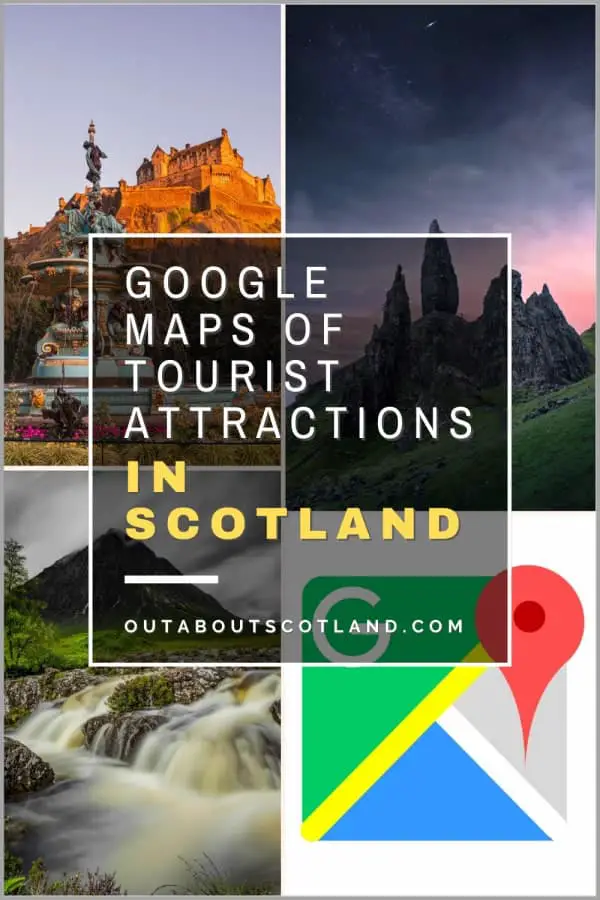Scotland is a country where the best things in life really are free, especially when it comes to famous attractions like Holyrood Park in Edinburgh, Glasgow Cathedral, The Quiraing on Skye, and Ben Nevis in the Highlands. Discover a collection of the best free things to do in Scotland with this complete visitor guide, which includes sightseeing advice and a detailed overview of each attraction.
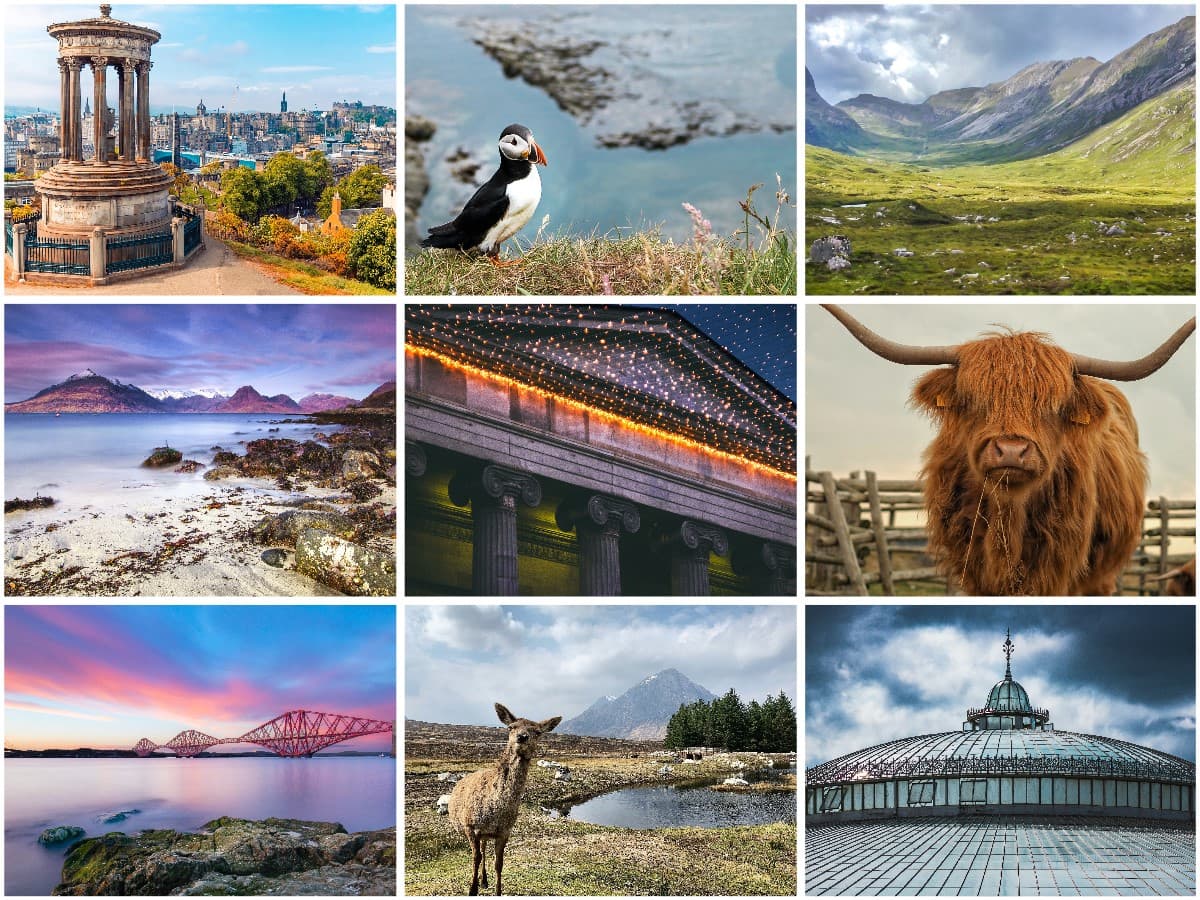
The Best Free Things to Do in Scotland
In Edinburgh, you can hike up an extinct volcano in Holyrood Park, wander around one of the oldest Botanic Gardens in Britain, see beautiful artworks in the National Gallery, marvel at the exhibits in the National Museum, and be awe-struck by the architecture of St. Giles Cathedral, all for the price of… exactly nothing.
Glasgow fares just as well with free attractions thanks to the stunning Glasgow Cathedral, the fascinating Riverside Museum of Transport, the amazing Tall Ship, the fantastic Kelvingrove Art Gallery and Museum, the wonderful Glasgow Gallery of Modern Art… and too many others to mention in this article.
Then, of course, there’s the Highlands. How about hiking Ben Nevis – the highest mountain in the United Kingdom, or exploring Scotland’s beautiful landscape at Glencoe? If you fancy discovering the country’s most picturesque lochs and woodland areas, you can head to Loch Lomond National Nature Reserve, Lochaber Geopark, or the mysterious waters of Loch Ness.
This article is broken down into the country’s main tourist areas, so hopefully you’ll find something that’ll interest you, but if not, take a look at the tourist attractions map linked at the very top of the page.
The Best Free Things to Do in Aberdeenshire
Aberdeen is one of the largest cities in Northern Scotland and is the perfect hub for tours into the Highlands. Although the city is best known for its links to the oil and gas industry, it also has a vibrant nightlife and extensive shopping areas, as well as the historic Old Town, which features the 525-year-old Aberdeen University.
In addition, there are several award-winning beaches, and ferry travel to Orkney and the Shetland Islands is easy from Aberdeen Ferry Terminal.
Aberdeen Maritime Museum
Address: Shiprow, Aberdeen, AB11 5BY
Contact details: Tel 01224 337700
Website: Aberdeen Maritime Museum

As the former fishing capital of Europe, Aberdeen has a long association with the sea and this museum located in the historic Shiprow area showcases the proud heritage of Aberdeen’s long seafaring history.
This 16th-century building is owned by the National Trust for Scotland which took ownership of it after it fell into ruin in the 1950s, and it’s now joint-managed by the NTS and Aberdeen city council. There are actually two parts to this attraction: the old Lord Provost’s house, which is built of traditional stone, and a modern steel and glass building.
It’s fitting that the old building contains all the traditional examples of shipbuilding, fishing, and harbour life, while the new building contains all the ultra-modern offshore oil and gas exhibits. It’s a nice touch and one of the reasons the museum is rated a four-star visitor attraction by Visit Scotland.
Inside the museum, you’ll find a collection of exhibits that cover the entirety of Aberdeen’s sailing and shipbuilding past, as well as the city’s current use as a fishing port and hub for oil exploration and extraction in the North Sea.
They’ve done a great job of making the museum interesting for all ages, and you’ll find an assortment of touchscreen consoles alongside more traditional display cases. Both children and adults will have a great time exploring the story of how this former shipping port became one of Scotland’s major industrial powerhouses.
As with all attractions like this, there’s a souvenir shop on-site that sells a wide range of gifts, crafts, and books, and there’s a great café that’s a bit of a tourist attraction in its own right thanks to the harbour-side views from its floor-to-ceiling windows.
Aberdeen Zoology Museum and Botanic Garden
Address: Tillydrone Ave., Aberdeen, AB24 2TZ
Contact details: Tel. 01224 274330
Website: Aberdeen Botanic Gardens / Aberdeen University Zoology Museum
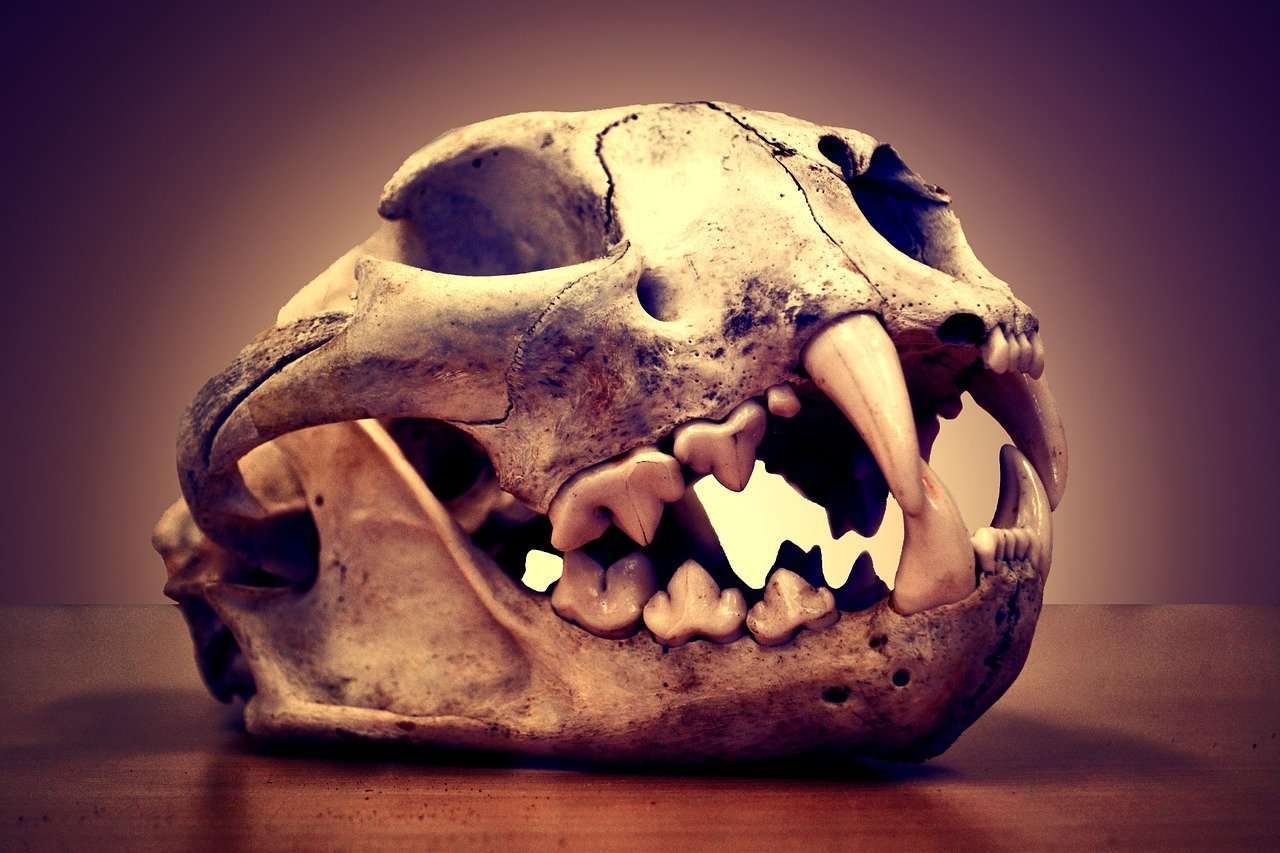
The Zoology Museum is located in the Aberdeen University zoology building where it showcases numerous exhibits that cover the complete spectrum of worldwide animal research, from the smallest protozoa to the largest whales.
During your time at the Aberdeen Zoology Museum you’ll see skeletons and models of a variety of animals, from monkeys to snakes and everything in between, as well as a fascinating collection of skulls and preserved animals. There are several taxidermy specimens in the collection as well so if you have children, taking them to this university museum is a good way to help them develop an interest in biology and the animal kingdom.
The entire collection is the result of over 200 years of university research by staff and students, and it has obviously been a work of love putting it all together. What’s even more impressive is the fact that the university has made the collection available to the public with no entrance fee, which is amazing considering there are over 75,000 exhibits to view.
Even better, the displays frequently change so that new specimens are added to the permanent vertebrate and invertebrate collections, so there’s a good chance there’ll be something new to see if you visit the museum another time.
Offered in tandem with the museum is the Cruikshank Botanic Garden located on the King’s College campus. Covering a surprisingly large 11 acres, the botanic garden is full of plants that have been collected from all over the world and there are over 2,500 specimens to view in the shrub borders, rose garden, water garden, and arboretum.
The gardens are exceptionally pretty and they bloom with colour in the summer, which makes this corner of Aberdeen University a great place to relax after a visit to the busy city centre. The gardens are located just 3 miles from Aberdeen train station, and you can easily get there by bus (see the First Bus Aberdeen route planner for details).
Balmedie Country Park
Address: Balmedie, AB23 8XG
Contact details: NA
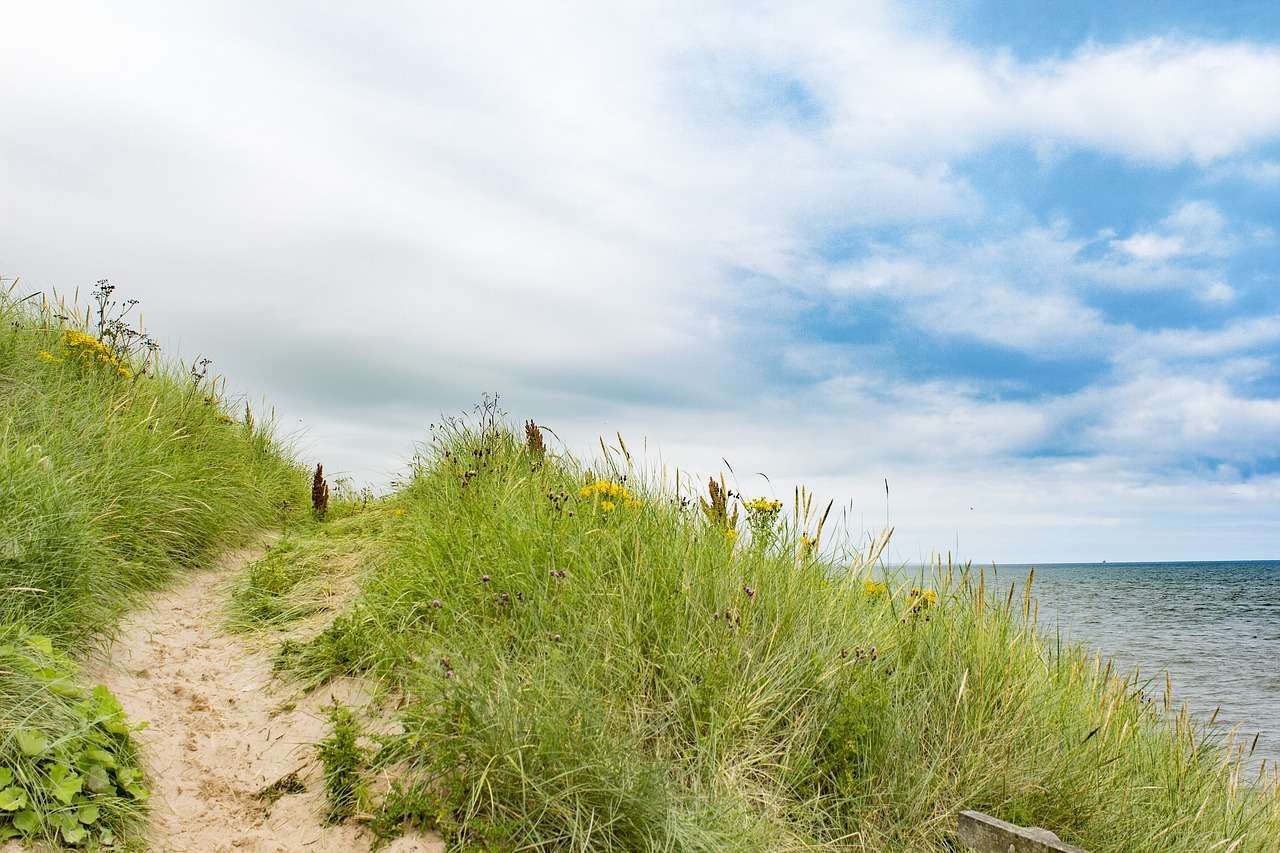
This park covers 14 miles (22.53 km) of coastline from Aberdeen to just north of the mouth of the River Ythan at Newburgh, and it’s home to a diverse range of animals and plants in the wide stretches of dunes that border the golden beaches.
There always seems to be something new to watch whenever I’ve visited Balmedie Country Park, so if you’re a bird watcher, I recommend you take your binoculars and camera with you. Oh, and don’t forget to look out towards the sea because there’s a good chance you’ll catch sight of bottlenose dolphins and harbour seals that live around this part of the coastline.
The dunes at Balmedie Country Park reach 30 feet high in some places, so here’s a tip for when you visit: take a plastic sledge. The dunes are steep enough to act as a fantastic slide, so you can go hurtling down them with a soft cushion of golden sand waiting for you at the bottom.
Smaller children will have a great time at the play park (located next to the car park), and if you have a dog, I can’t think of anywhere they’ll enjoy more, but as there are often horse riders on the beach, you might want to keep them on a lead.
Aberdeen Council has worked wonders to make the park accessible with one mile of wooden boardwalks that have been installed throughout the dunes, so even if you have mobility issues, you’ll still be able to enjoy the beautiful surroundings.
The car park is a decent size, so you shouldn’t have any problems finding a parking space, and they’ve even installed picnic benches and barbecue fire stands so you can have an al-fresco family munch. Well done, Aberdeen Council!
The Best Free Things to Do in Argyll & Bute
The mainland area of Argyll and Bute is located on the southwest corner of the Highlands where visitors can explore popular tourist destinations including Oban, Campbeltown, and Helensburgh. In addition, this tourist-favourite region is home to 7 nature reserves and a coastline that offers lots of places to see the country’s iconic wildlife such as puffins, otters, seals and sea eagles.
Argyll and Bute is renowned for its historic attractions, and visitors can enjoy highlights including Inveraray Castle, Dunstaffnage Castle, Inveraray Jail, and Bonawe Iron Furnace, to name just a few.
Kilchurn Castle
Address: Lochawe, Dalmally, PA33 1AF
Contact details: NA
Out About Scotland visitor guide: Kilchurn Castle
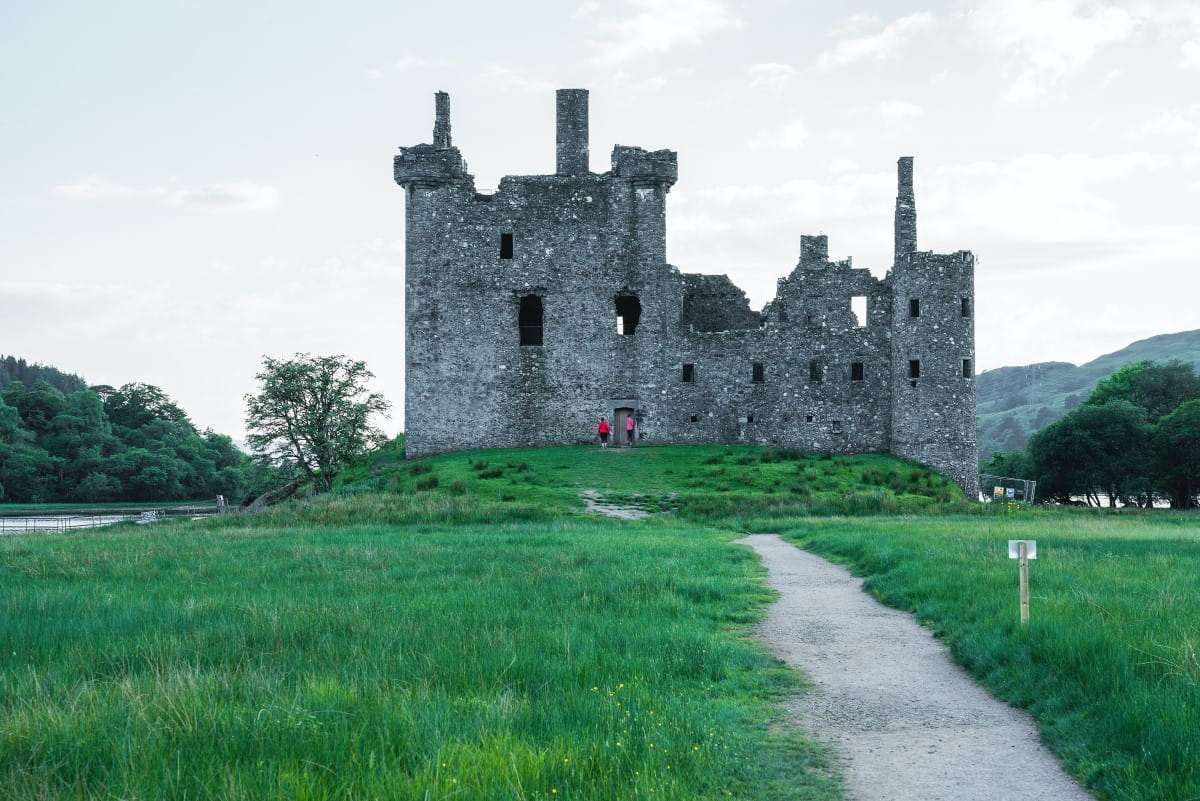
Kilchurn Castle has to be one of the most picturesque castles in Scotland, so it’s surprising that visiting this historic attraction at the head of Loch Awe is completely free of charge. To find it, look for a car park on the side of the A85 at the northern end of Loch Awe, around 2 miles (3.22 kilometres) north of St. Conan’s Kirk.
There’s a walk of perhaps one mile from the car park to the castle through grassland, after which you’ll find yourself outside at the main entrance.
Kilchurn Castle was built in the mid-1400s to serve as the main seat of power for Clan Campbell of Glenorchy and was extended several times as the Campbells became more powerful. When it ceased being used as an ancestral home in the 1680s it was converted to a military garrison that was eventually abandoned due to lack of use.
As the castle is unmanned, there’s no guarantee the main gate will be open, though summer visitors should find the castle accessible all day, every day.
Visiting in winter is another story, however, so be prepared to find the gate closed outside of the tourist season. If you do manage to enter the castle you’ll find it’s roofless and almost entirely in ruin, though there’s a staircase leading up to one of the main towers that let you soak up the gorgeous views across Loch Awe that Kilchurn Castle is famous for.
Wandering around the interior won’t take long – maybe half an hour – so you should have plenty of time to head back outside to admire the view, but be aware that this is the Highlands and you’ll be near water, which equals millions of biting midges in the morning and evening.
One tip I have for you is that you’ll get a superb view of the castle from a designated viewpoint on the southern side of the loch. Follow the A85 east when you depart and turn 19 to find it.
McCaig’s Tower
Address: Oban, PA34 4AA
Contact details: NA
Out About Scotland visitor guide: McCaig’s Tower
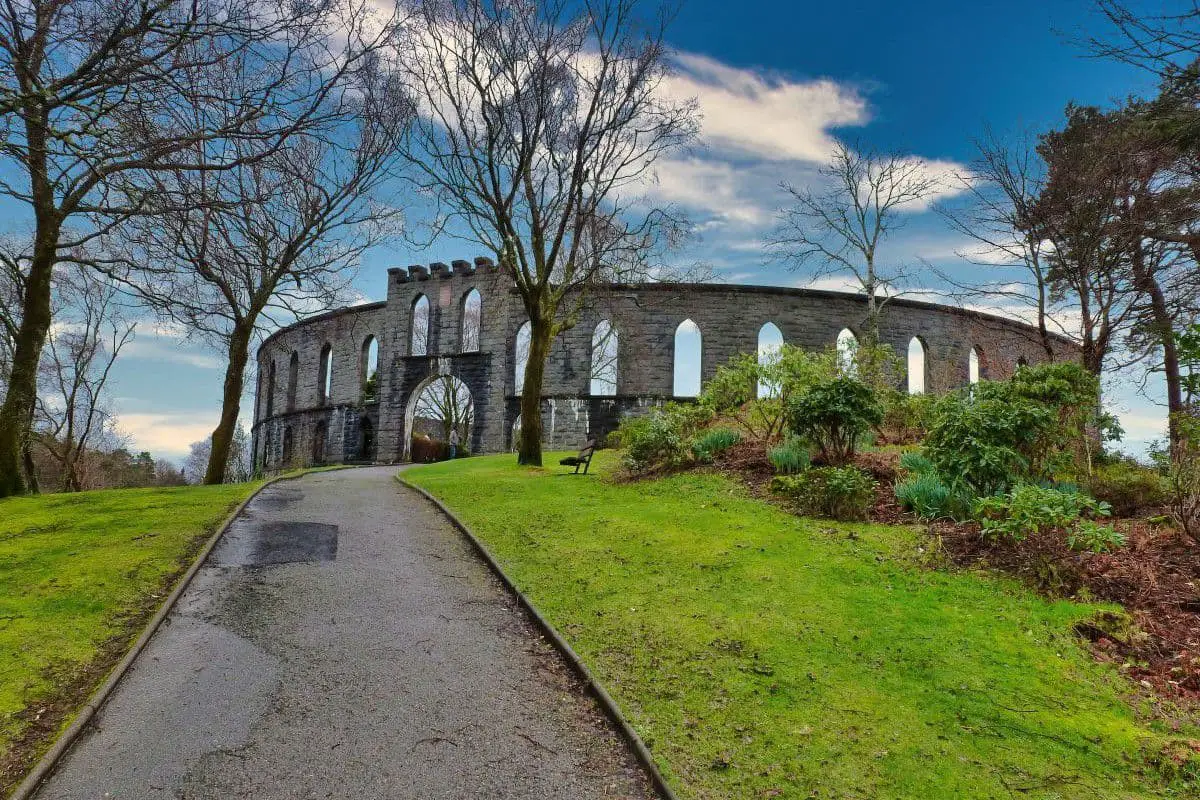
For the majority of visitors, Oban is little more than a ferry gateway to the Western Isles, but there’s much more to this quaint fishing town than first meets the eye. Not only is it renowned for its incredibly fresh seafood, but there’s a good whisky distillery in the high street and McCaig’s Tower – a large Victorian monument – is situated on the hill above.
The tower (it’s really more like a mini-coliseum than a tower) is perched on top of Battery Hill, where it has loomed over Oban for more than 120 years. John Stuart McCaig, a philanthropist, started construction on it as a memorial to his family with the intention of adding a museum, but after his passing, work stopped and the multi-arched outer wall remained unfinished.
It’s worth taking the 10-minute walk up the hill to take a look at this curiosity for no other reason than to enjoy the spectacular viewpoint at the top that offers views of Kerra, Lismore, and Mull, as well as the ferries that sail in and out of the harbour almost hourly.
The best views are on the other side, where the panorama is unhindered by the walls. There are flowerbeds and landscaped lawns inside the tower, as well as a path that circles it so you can look through the 94 arches set into the stonework.
I certainly wouldn’t say McCaig’s Tower is worthy of a journey specifically to see it, but if you’re in Oban, it makes a nice addition to a sightseeing tour of the town.
St. Conan’s Kirk
Address: Lochawe, Dalmally, PA33 1AQ
Contact details: enquiries@stconanskirk.org.uk
Out About Scotland visitor guide: St. Conan’s Kirk
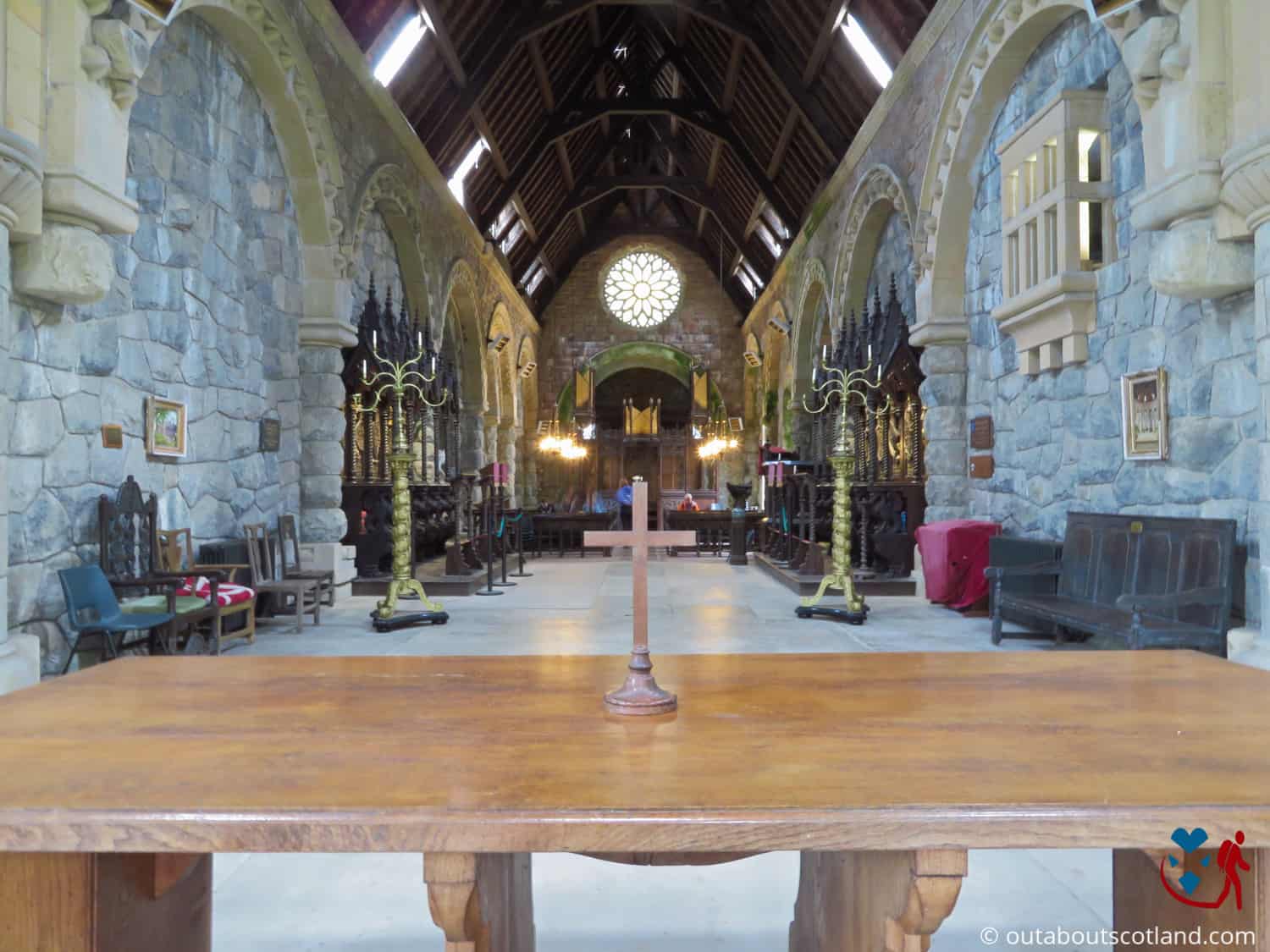
There are hundreds of picturesque churches in the Scottish Highlands, and St. Conan’s Kirk near Dalmally is up there with the best of them. Although it looks mediaeval,l, it is, in fact, a’mere 135 years old and was built by Walter Campbell, a wealthy architect, as a place of worship for his mother. Both the intricate stone carvings on the exterior walls and many of the elaborate decorations inside the building were hand-carved by Campbell.
The kirk’s location on the western shore of Loch Awe is exceptionally pretty and easily rivals the views from Kilchurn Castle (widely acknowledged as one of the most scenic places in Scotland), and the interior isn’t far off the stunning Rosslyn Chapel in East Lothian.
There’s a small garden with managed flowerbeds and a Celtic cross on top of a small hill to the side of the main building, and another garden to the rear features a seating area with views across the loch.
It’s not exactly the biggest attraction in Scotland so plan no more than an hour in total unless you intend to eat in the tearoom next door, though there are a couple of other attractions in the immediate area that can be visited in addition to the kirk.
First off is Ben Cruachan, which is one of the few Munros that has a tarmac path running up it thanks to the dam near the top, and the second is the Hollow Mountain visitor centre, which has an exhibition about hydroelectricity as well as a gift shop and a café.
The Best Free Things to Do in the Scottish Borders
The Scottish Borders (usually just called ‘The Borders’) mark the boundary between England and Scotland. The region sits between the River Tweed and the Cheviot Hills on the southern side and the Pentland, Lammermuir, and Moorfoot Hills on the northern side.
Although the Borders are located in the part of Scotland known as ‘The Lowlands’, the landscape is surprisingly diverse with ranges of rolling hills to the west, a very pretty coastline to the east, and vast stretches of farmland and forests in the middle.
Visitors are spoilt for choice of places to visit but the highlights have to be the pretty towns of Peebles, Melrose, and Selkirk, and the historic abbeys of Dryburgh, Kelso and Jedburgh.
Coldstream Museum
Address: 12 Market Square, Coldstream, TD12 4BD
Contact details: museums@scotborders.gov.uk
Website: Coldstream Museum
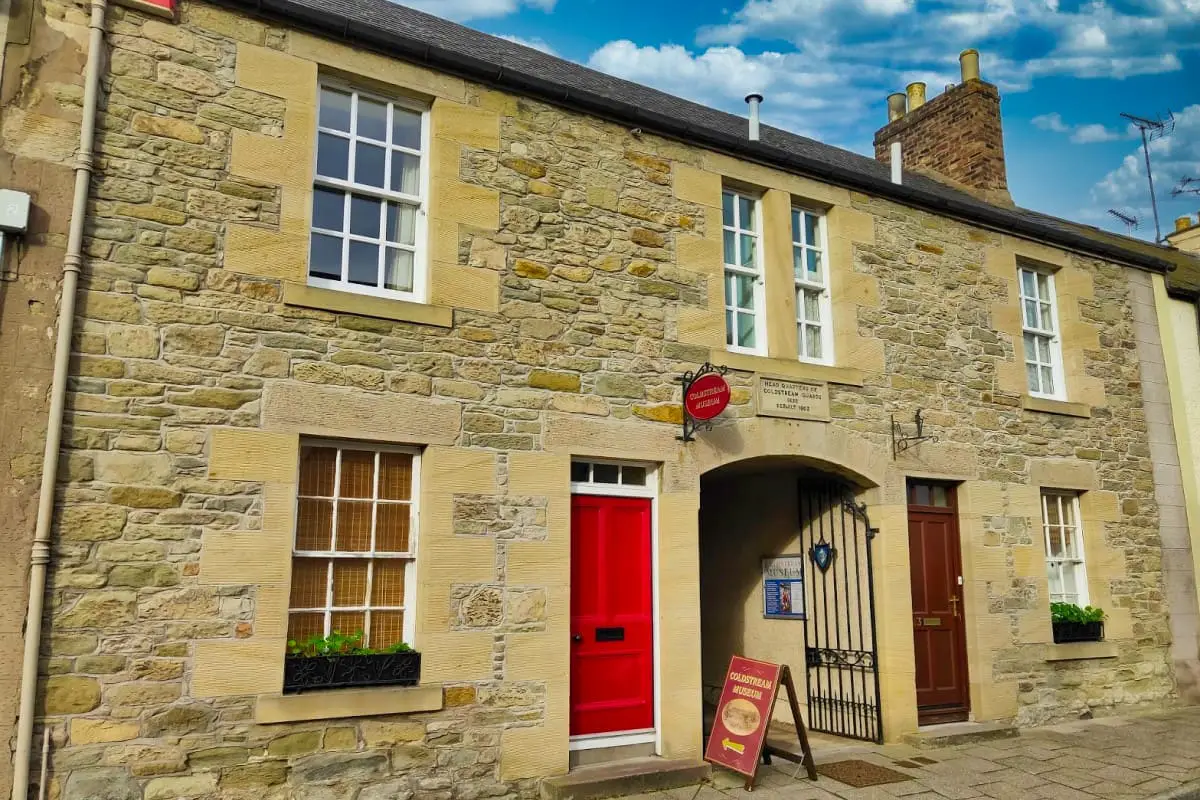
The upmarket village of Coldstream has had a long association with the British Army and is best known as the permanent barracks of the Coldstream Guards regiment. The guards are one of the oldest continuously serving regiments in the army and have a long tradition of protecting the British monarchy. That, in turn, means they’re one of the most widely recognised military units in the world, thanks to their bright red tunics and bearskin hats that you’ll see at Buckingham Palace.
This museum in the centre of Coldstream features a large collection of exhibits and memorabilia from the regiment’s long history, including collections of uniforms, weaponry, and items collected during various conflicts.
In addition, there are lots of information boards that explain the history of the guards from the days when the regiment was founded to their current operations. This is an excellent museum that’s certainly worth visiting if you’re travelling through Coldstream or looking for an indoor attraction after exploring the nearby Hirsel Estate country park.
The facilities are pretty good for a free attraction and include an interactive children’s play area and a gift shop, and there’s a small courtyard with picnic tables if the weather allows for a spot of al-fresco munching.
As a top tip, after a visit to the museum, you might consider driving 12 miles (19.31 km) south on the A697 to Northumberland National Park, which is a stunning landscape of forests and open countryside, or driving 20 miles (32.19 km) west to Holy Island, which is famous for its mediaeval priory.
Mary Queen of Scots Visitor Centre
Address: Queen Street, Jedburgh, Roxburghshire, TD8 6EN
Contact details: museums@scotborders.gov.uk
Website: Mary Queen of Scots visitor centre
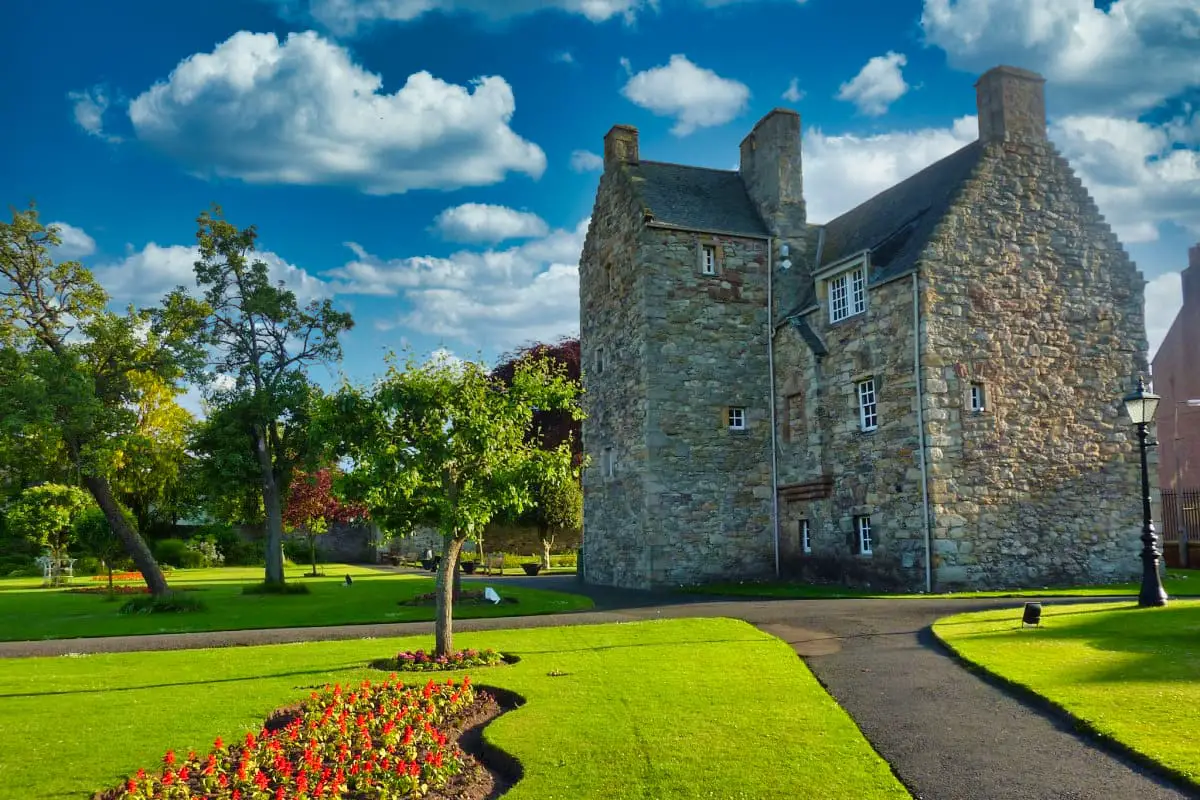
As well as being one of the Scottish Border’s most attractive towns, Jedburgh has some of the best historic attractions in the region including Jedburgh Abbey, Jedburgh Castle Jail, and the fascinating Mary Queen of Scots Visitor Centre.
This four-star visitor attraction tells the story of the tragic queen from her childhood at Stirling Castle and her ascension as the Queen of Scotland to her Execution at Fotheringhay Castle in England. Mary spent a month in Jedburgh in 1566 when she was recovering from an illness and the museum in the building where she stayed has been restored to the same condition it was in when Mary was there.
Visitors to the house can learn how the young queen spent her days in Edinburgh and the subsequent events that led to her accusations of treason.
Several rooms feature paintings and storyboards that depict the life of the queen, and there are audio guides that explain the history behind each exhibit. Everything has been put together incredibly well and I would have to say the Mary Queen of Scots Visitor Centre rivals any other independent museum in Scotland, which makes the fact there is absolutely no entrance fee a remarkable achievement.
After walking around the house, there are attractive gardens to explore and a gift shop to buy a memento or two. Afterwards, I recommend heading to Jedburgh Abbey (see the Historic Environment Scotland website for admission) and having a bite to eat in one of the artisan cafés on Jedburgh High Street.
Kelso Abbey
Address: Kelso, Roxburghshire, TD5 7JF
Contact details: customer@hes.scot
Website: Kelso Abbey
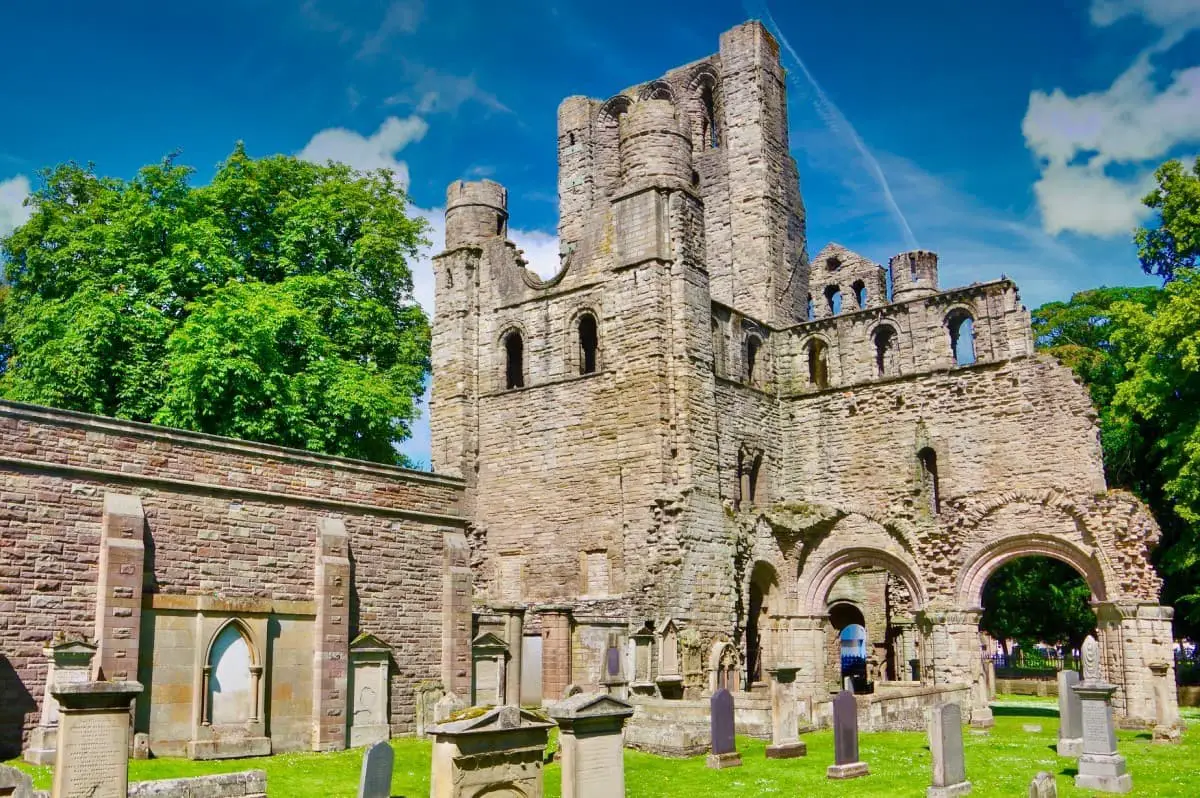
Kelso Abbey was founded in the 1100s when David I of Scotland invited monks from Tiron Abbey in France to relocate to the Scottish Borders village of Selkirk. When King David built a new castle at Roxburgh, the monks decided to move closer to him, which is why they founded an abbey at Kelso.
As far as Borders abbeys go, Kelso is one of the smallest, but it’s also one of the most interesting.
After being founded, it soon grew into one of the largest and wealthiest in Scotland, which in turn meant it was also one of the most powerful,hence the reason why the Abbot of Kelso was given more authority than any other Scottish Abbot. The abbey amassed a great deal of wealth in the form of land, institutions, and farms, but in the 1540s, Henry VIII’s armies partially destroyed it, leaving it to fall into ruin.
Surprisingly, much of the original building is still standing after all this time and visitors can view the nave, the western transept and most of the western front which escaped Henry’s cannons virtually unscathed.
The abbey is free to visit, but it’s also unmanned, so there are no facilities inside. To be honest, that’s not too much of a problem, as most visitors will only need an hour to see the majority of the site. After a walk around the abbey, tourists might like to pop into Kelso town centre, which features a traditional high street with over fifty local traders. While there, keep an eye out for the cobbled town square, which is the largest in Scotland.
The Best Free Things to Do in Central Scotland
The central belt of Scotland stretches east to west between the areas of Edinburgh and Glasgow and includes the counties immediately to the north including Perthshire, Angus, Stirling, and Fife.
The region extends partially into the Highlands and the Lowlands and is best known for its varied landscapes that comprise the best of both areas, with hundreds of lochs, mountains, and forests for visitors to explore.
Because Central Scotland has so many outdoor attractions it’s one of the top destinations for wildlife enthusiasts and is highly regarded for its walking trails that include the John Muir Way and the Fife Coastal Path.
Loch Leven Heritage Trail
Address: Kinross, KY13
Contact details: NA
Out About Scotland visitor guide: Loch Leven
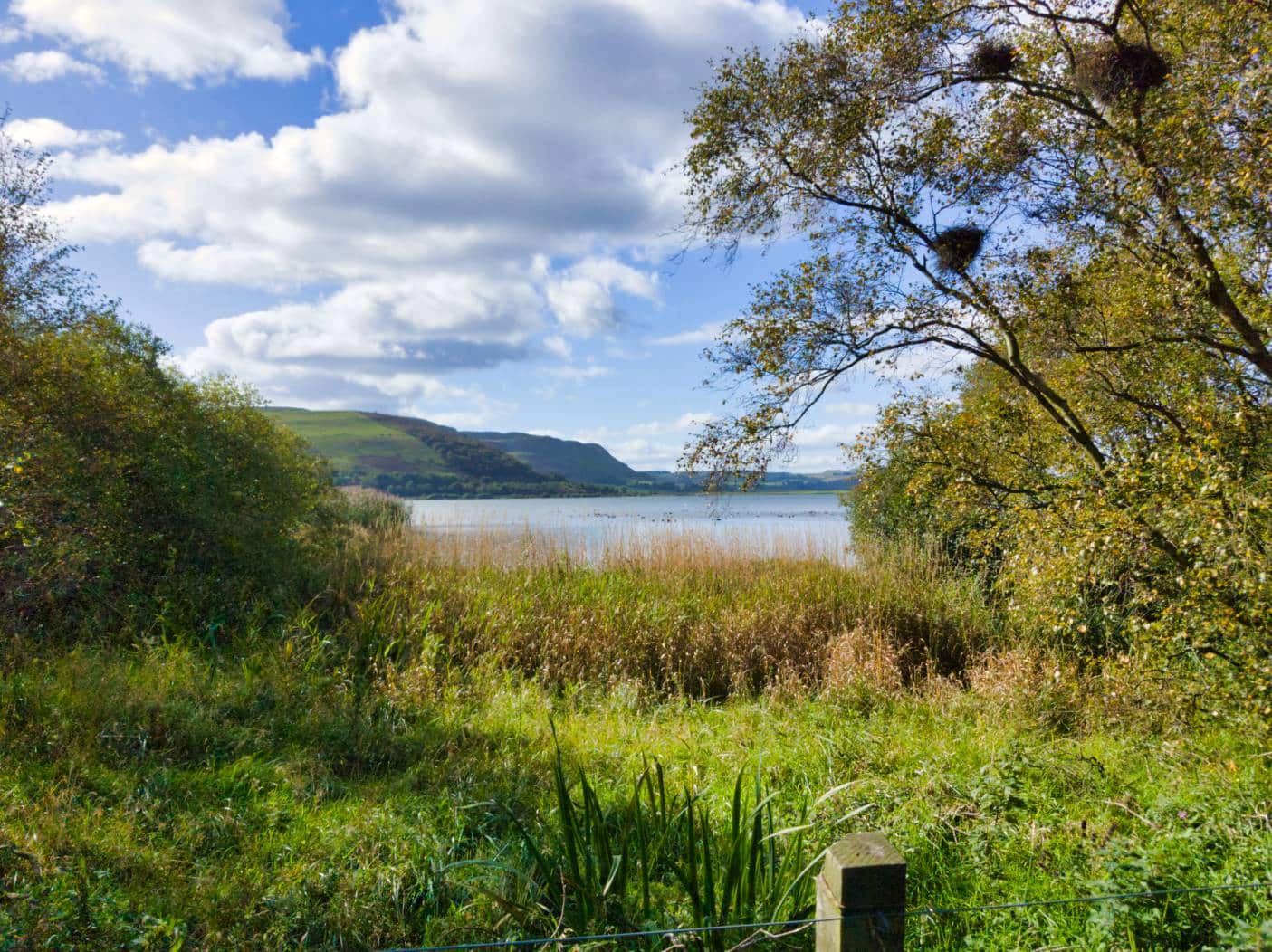
The immense Loch Leven is located on the eastern side of the M90 in Kinross, around a 20-minute drive from Dunfermline. The loch is well known as a haven for wildfowl, and there is an RSPB visitor centre on the loch’s eastern side that has information about the wetlands and the birds that can be seen in them, as well as a café and a gift shop.
On the eastern side of the loch, there’s another visitor centre in Kinross that has a waterside café, next to which is a ticket office for a ferry boat that takes foot passengers onto a small island with a castle that was once the prison of Mary Queen of Scots.
Topping off those activities is the 13-mile Loch Leven heritage trail that circles the entire site on a wide gravel track. The footpath allows cyclists and walkers to enjoy the diverse habitats of Loch Leven from moorland to woodland and pastures to beaches.
It’s a stunning trail that’s one of the most scenic footpath walks in Scotland, and it has the added bonus that virtually the entire trail has disabled access, so all abilities can enjoy it.
Both visitor centres have large car parks but RSPB Vane Farm is slightly preferable as it’s not quite as busy as Kinross and it’s closest to the bird hides where visitors can watch some of the biggest flocks of breeding ducks in Europe, as well as less-viewed birds such as lapwings, ospreys, and kingfishers.
Visiting Loch Leven with binoculars is a must, so if you haven’t already got a pair, take a look at this guide:The Best Budget Birdwatching Binoculars.
Fife Coastal Path
Address: NA
Contact details: NA
Out About Scotland visitor guide: East Neuk of Fife
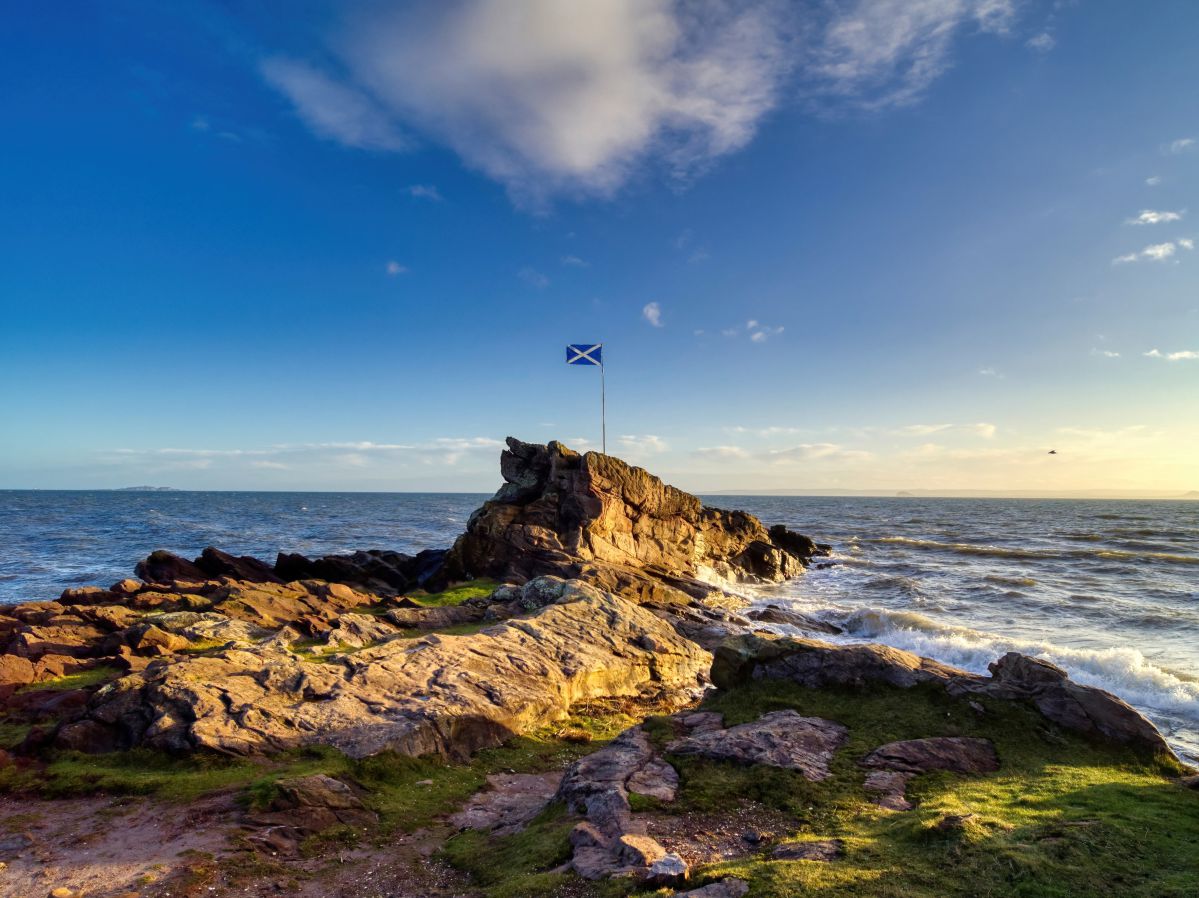
Fife is a region of Scotland that has a lot to offer visitors, yet international tourists always seem to pass it by on their way between Edinburgh and the Highlands. That’s a shame, as this east-coast county is one of the most scenic in the country and has a surprising amount of coastline due to it bordering two major estuaries at the Firth of Forth and Firth of Tay.
Without a doubt, the best way to explore Fife’s coastline is to walk the Fife Coastal Path which stretches for 117 miles (188.29 km) from Kincardine in the south to Newburgh in the north. The route offers a superb walking experience with difficulty levels ranging from flat and easy-going to steep and demanding.
Starting in Kincardine, the path allows walkers to enjoy Fife’s always-popular coastline on well-maintained paths that are mostly tarmac but occasionally divert onto grass tracks. Along the way, there’s a surprisingly diverse range of landscapes that blend nature reserves, historic villages, long-abandoned industries, iconic bridges, and beaches, all within a short drive of Edinburgh.
As you progress further along the route it transitions between golden beaches and rough shingle that are interspersed with tourist-worthy villages and towns including Elie and St. Andrews, before rounding the headland at Tentsmuir National Nature Reserve.
The Fife Coastal Path is a bit of a hidden gem amongst Scotland’s wonderful walking trails, but to really make the most of it you need to know the features to look for in each section.
There’s an official guidebook that can be purchased from the website shown above, or visitors can purchase detailed maps from Ordnance Survey that show exactly which paths to follow for each section (OS Explorer Maps #367 and #371 cover the majority of the route).
Buy OS Explorer Maps direct from Ordnance Survey.
Tentsmuir National Nature Reserve
Address: Tentsmuir Forest, Tayport, Fife, DD6 9PF
Contact details: Tel 01738 458818
Out About Scotland visitor guide: Tentsmuir Nature Reserve

Tentsmuir National Nature Reserve is located in the north of Fife, midway between St. Andrews and Dundee. The reserve is one of the best wildlife tourism destinations in Scotland thanks to its ever-changing coastline comprised of sand dunes, mudflats, and grassland that attract teal, kingfishers, otters and many more species.
In addition to the coastline, Tentsmuir NNR is home to an expansive forest comprised of pines and mixed woodland as well as the pretty Morton Loch which is a haven for insects and freshwater fish.
There is a network of well-kept paths throughout the reserve that are primarily gravel and tarmac, with a few spots where the path turns into a rough track. The majority of the paths running through Tentsmuir Forest are designated as walking and cycling trails of varying grades, from a short 4-mile trail to an ice house and WWII defences.
There are also longer trails that run through the forest and out to the Tay Road Bridge which visitors can cross to enter the city of Dundee. Most people will find these tracks easy-going and they are suitable for both walkers and cyclists. The paths near the main car park are mostly tarmac and are suitable for pushchairs and wheelchair users.
There are some free car parks on the reserve but they can be difficult to find so the best option is to head to the main car park off the B945 between Leuchars and Tayport (postcode KY16 0DR). The car park is quite sizeable and includes a children’s play park, public toilets, a snack van, and a BBQ area.
The Best Free Things to Do in Dumfries and Galloway
The lowland Scottish region of Dumfries and Galloway is best known for its sandy beaches along the coast and its undulating hills, which are home to many of Scotland’s most remote forests.
As a place to visit for anyone who loves the great outdoors it ranks amongst the best in the country, with highlights including Galloway Forest Park and the Solway Firth. The region also has three designated National Scenic Areas at Nith Estuary, East Stewartry Coast, and Fleet Valley, and several wildlife reserves that include the Mull of Galloway, Mereshead, and Ken Dee Marshes.
The Solway Firth
Address: NA
Contact details: NA
Out About Scotland visitor guide: Solway Firth
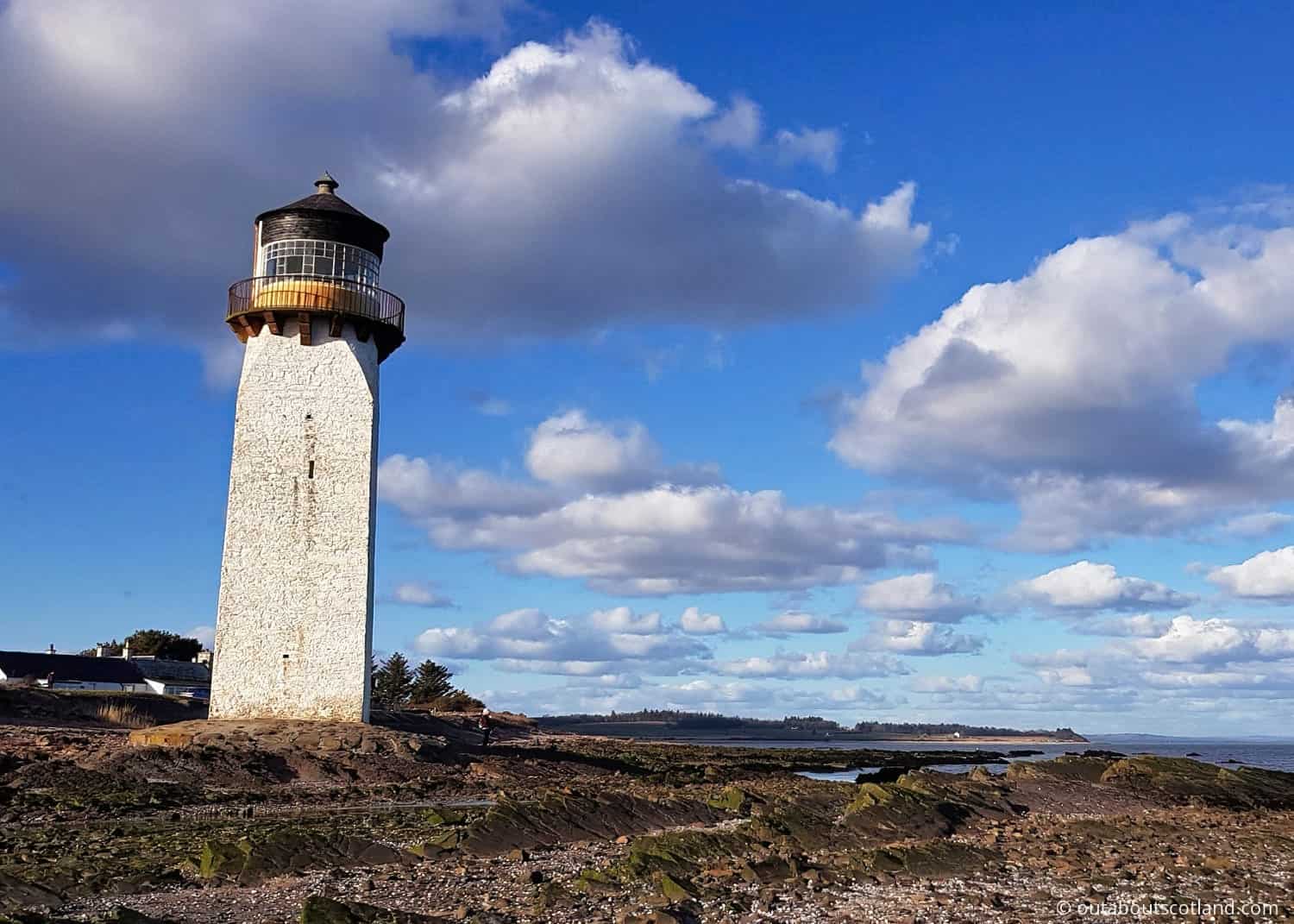
The Solway Firth is an area of outstanding natural beauty that borders England and Scotland from St. Bees Head in Cumbria to the Mull of Galloway on the western edge of Dumfries and Galloway.
It’s the third-largest estuary in Britain and comprises many different habitats from dunes and mudflats to salt marshes, which is the main reason why the area is regarded as one of the best in the United Kingdom for birdwatching. The tidal sand flats are home to vast flocks of breeding waders and in winter the coastline comes alive with the raucous calls of tens of thousands of migrating barnacle geese
The Solway Firth was designated as an area of outstanding natural beauty in 1964 and has been managed as an area for wildlife preservation since then, with an RSPB reserve at Mereshead and a national nature reserve at Caerlaverock (home to the one-of-a-kind triangular Caerlaverock Castle).
In addition to the wildlife, visitors can enjoy coastal walks on footpaths that pass through woodland and rolling fields in between peat bogs and sand dunes for an outdoor experience that’s rarely beaten anywhere else in Scotland.
There are too many points of interest to include in this article, but a recommended highlight is Caerlaverock Nature Reserve which is free to enter and has wooden boardwalks running through dense wild grasses that are home to countless waders and wildfowl.
Kirroughtree Forest
Address: Postcode DG8 7BE.
Contact details: Tel 0300 067 6900
Website: Forestry and Land Scotland

The visitor centre at Kirroughtree is just one tiny part of the enormous Galloway Forest Park that covers a broad swathe of the landscape between Girvan and Kircudbright. Although there are two other visitor centres in the park (Glentrool and Clatteringshaws), the one at Kirroughtree has arguably the best facilities with a large car park, a café, outside seating areas, a shop, wildlife hides, children’s play areas and much more besides.
Kirroughtree is also the best centre to explore the forest, and four superb trails offer walks of varying lengths for all ability levels. Wheelchair users can enjoy an excellent path from the visitor centre to a forest wildlife hide, and walkers can challenge themselves to a strenuous climb up Larg Hill, which has stunning panoramic views at the top.
There are also designated mountain bike trails at Kirroughtree that rival anywhere else in Scotland and I have to highlight the skills area located close to the visitor centre which is a great place to hone your mountain biking skills.
Kirroughtree is part of the 7Stanes mountain biking trails that are widely regarded as among the best bike trails in the world, so if you have a passion for being on two wheels you really owe it to yourself to visit the centre.
Finally, Kirroughtree visitor centre is located in the heart of the Galloway Forest Park dark sky area which is one of the few places in the country where it’s possible to see the night sky unobscured by light pollution. If you’ve never visited a dark sky park before I highly recommend staying after the sun goes down to watch the spectacle of the stars in all their glory.
Mossburn Community Farm
Address: Hightae, Lockerbie DG11 1LE
Contact details: Tel 01387 811288
Website: Mossburn Community Farm

Mossburn Community Farm near Hightae is one of the smallest free attractions in this list, but I have to include it as it’s a lovely wee place that absolutely deserves a mention.
The farm is a nonprofit organization that relies almost entirely on volunteers to help unwanted and mistreated farm and domestic animals. The team cares for a number of very cute furry critters, including goats, cattle, horses, and rabbits, and visitors are welcome to wander amongst the animals, who will be only too happy to get a pat on the head and a good scratch behind the ear.
The volunteer staff are incredibly helpful and will gladly show you around the paddocks, after which you can have a cake and a cuppa at the on-site tearoom and buy a keepsake from the small shop.
Mossburn Community Farm has been running for over 30 years and their dedication to animals has been unwavering in that time, which is remarkable considering they have to rely purely on donations and the income from their small shop.
If you can, please visit the farm and say hello to the team and the animals, but if you’re unable to make the journey, there will be some very thankful furries if you can donate online. See the Mossburn Community Farm donations page here.
The Best Free Things to Do in Edinburgh
Edinburgh is the compact and hilly capital city of Scotland that offers a wide range of family-friendly tourist attractions. As well as an expansive parkland formed from an extinct volcano the city boasts Scotland’s most-visited attraction at the impressive Edinburgh Castle.
Edinburgh also plays host to the world’s biggest multi-arts festival as well as the Royal Military Tattoo, which draws thousands of visitors each year and is one of the world’s most-viewed military events.
The National Museum of Scotland
Address: Chambers St, Edinburgh, EH1 1JF
Contact details: Tel 0300 123 6789
Website: The National Museum of Scotland

This enormous museum easily rivals any other worldwide, and not only can you get lost in the wonders of history in the ultra-modern exhibitions, but you can also marvel at the fully-restored architecture of the Victorian Grand Gallery.
One of the things I love about the National Museum of Scotland is that it’s full of an incredibly diverse range of exhibits that include the fields of nature, art, design, fashion, science, and technology (to name just a few).
There are galleries containing meteorites from the dawn of our planet, galleries depicting the somewhat later history of Scotland, galleries displaying incredibly lifelike animals from an extinct T. rex to an endangered Scottish wildcat, galleries focused on world culture, and galleries showing just about everything else in-between.
The curators have done a wonderful job of presenting each area as a mixture of education and fun so you’ll likely find yourself getting as excited about the story of meteorites and dinosaurs as your children.
The science and technology galleries, in particular, are great fun, and you can compete with each other in games such as seeing how much energy you can burn in a giant hamster wheel, or trying to get the fastest lap in an F1 racing car simulator, or even attempting to beat a cheetah in a race.
If you have extra time on your hands, the museum presents premium exhibitions that showcase everything from the history of video games to the history of fashion, and while the tickets can be a bit pricey, they’re free if you become a National Museums of Scotland member. There are also a couple of cafés if you feel the need to take a break, and the gift shop sells lots of quality souvenirs.
The Edinburgh Royal Botanic Gardens
Address: Inverleith Row, Edinburgh, EH3 5LR
Contact details: Tel 0131 248 2909
Out About Scotland visitor guide: The Edinburgh Royal Botanic Gardens
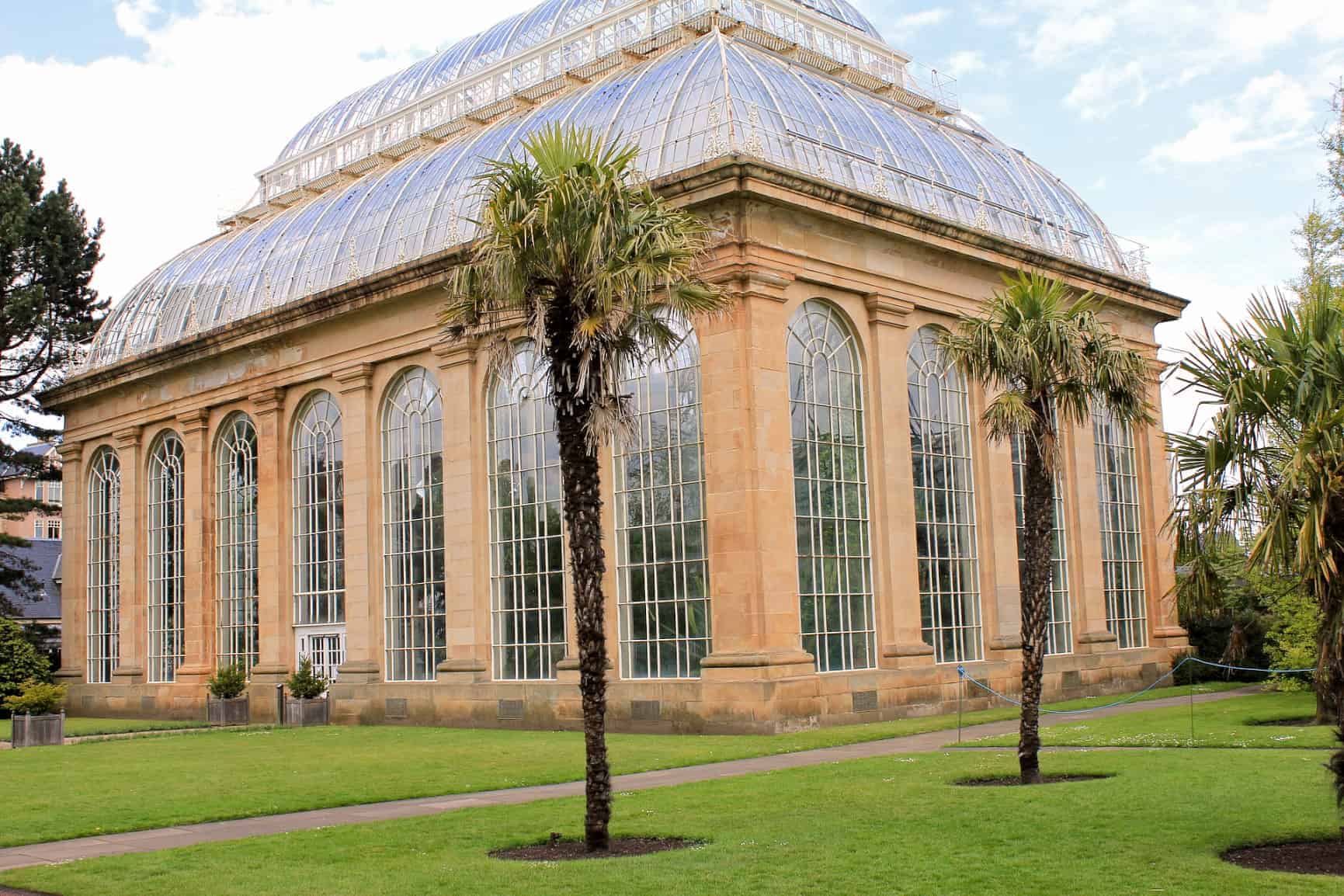
One of the best botanic gardens in the UK is located in Edinburgh, and a short bus ride from the city centre will allow you to explore over 13,000 different plant species in the most beautifully landscaped and manicured grounds you’re ever likely to see.
Founded in 1670, the Royal Botanic Garden Edinburgh (RBGE) is the second-oldest botanic garden in Britain after the gardens in Oxford.
What makes the Edinburgh gardens so special is that they boast the most diverse collection of plants in Britain and across 70 acres you’ll find yourself transported all over the world from the low-lying mosses that live on Peruvian mountains to the dense green vegetation of the Brazilian jungles.
As a place to relax away from the busy city centre, the gardens are only equalled by the Water of Leith, and the facilities easily rival those found at any other Edinburgh attraction with cafés, a restaurant, snack stations, a gift shop, and an information centre.
The gardens themselves are divided into regions of the world, which all flow seamlessly into one another, so that walking from alpine rockeries into a Chinese hillside feels completely natural. If you want to explore the wilds of Scotland, then a walk around the Scottish Heather Garden will transport you deep into the Highlands, and there’s even an old abandoned croft to enhance the experience.
Although the gardens are free to enter it’s worth paying the small fee to get into the premier attraction of the RBGE which is the tropical jungle that lives inside a giant glasshouse. The glasshouse contains some of the oldest plants in the entire collection (as well as some of the largest) and there are more than 3,000 exotic species that have been collected from all over the world.
Other highlights of the RBGE include a woodland garden, an arboretum, a Rhododendron collection, alpine houses, and a botanic cottage (which is used for education and community sessions), while the visitor centre houses exhibitions that change on a regular basis.
St. Giles Cathedral
Address: High St, Edinburgh, EH1 1RE
Contact details: Tel. 0131 226 0674
Out About Scotland visitor guide: St. Giles Cathedral

If you’ve ever looked through photos of Edinburgh on the internet there’s no doubt you’ll have seen Saint Giles Cathedral dominating The Royal Mile in the middle of the city’s Old Town.
The cathedral has been a focal point in Edinburgh for over 900 years, although the present structure that we see today can trace its roots back to the 14th century. Due to its central location on The Royal Mile, St. Giles has become a popular tourist attraction and it’s an ideal stop-off point between excursions to the palace at the bottom and the castle at the top.
One thing I should point out is that the cathedral is still an active place of worship so entrance might not be possible during times of prayer, but mid-week tourists are free to enter and explore the interior as much as they like. There are five services held every Sunday and on average fourteen acts of worship take place each week, often with the St. Giles Cathedral Choir singing in full voice.
The choir is acclaimed throughout Europe and America and it’s quite an experience to listen to them during the leading of the worship. They’ve even released a few albums which can be purchased from the gift shop alongside other souvenirs to remind you of your time in Edinburgh.
The Best Free Things to Do in Glasgow
Glasgow is Scotland’s largest city and is renowned for its culture, style, and its variety of tourist attractions. The city provides one of the best shopping experiences in Scotland and it’s home to lots of big attractions like the SECC and Kelvingrove Art Gallery and Museum.
Glasgow also offers a diverse range of internationally acclaimed museums, beautiful architecture, vibrant nightlife, and a selection of quality restaurants and bars.
The Glasgow Gallery of Modern Art
Address: Royal Exchange Square, Glasgow, G1 3AH
Contact details: Tel 0141 287 3050
Out About Scotland visitor guide: The GOMA

The Glasgow Gallery of Modern Art (or the GOMA as it’s often called) is Scotland’s most-visited art gallery, beating the national galleries of Edinburgh for annual footfall numbers.
You’ll probably recognize the GOMA from the hundreds of photos on the internet where a Duke of Wellington statue stands proudly outside a very grand neoclassical building… with a traffic cone stuck on his head. The cone has embedded itself into Glasgow culture over the last thirty years since it was first placed there and the council seems to have given up trying to remove it, mainly because as soon as they do it’s put back by more late-night revellers.
The museum is relatively new to the city having only opened in 1996 but the building itself dates back to 1778 when it was built as a townhouse for a wealthy tobacco trader.
There’s a lot to see in this gallery, and not only are there permanent displays from local and international artists, but there’s also an ever-changing collection of temporary exhibitions loaned from other Glasgow city collections.
The gallery has been set up to display the artworks in a way that’s both educational and enjoyable and there are lots of information boards to let visitors know the story behind each artwork as well as the artist that created it.
Because the GOMA is so centrally located it’s a good place to visit if you get fed up with shopping and there are plenty of nearby bars and restaurants to pop into if you stay until closing time (particularly Thursday when it’s open till 8 pm). If you’re a weary parent who’s tired of excitable children racing around the gallery you’ll be pleased to know there’s also a top-notch café on-site as well as a decent shop and a library.
Kelvingrove Art Gallery and Museum
Address: Argyle St, Glasgow, G3 8AG
Contact details: Tel 0141 276 9599
Out About Scotland visitor guide: Kelvingrove Art Gallery & Museum
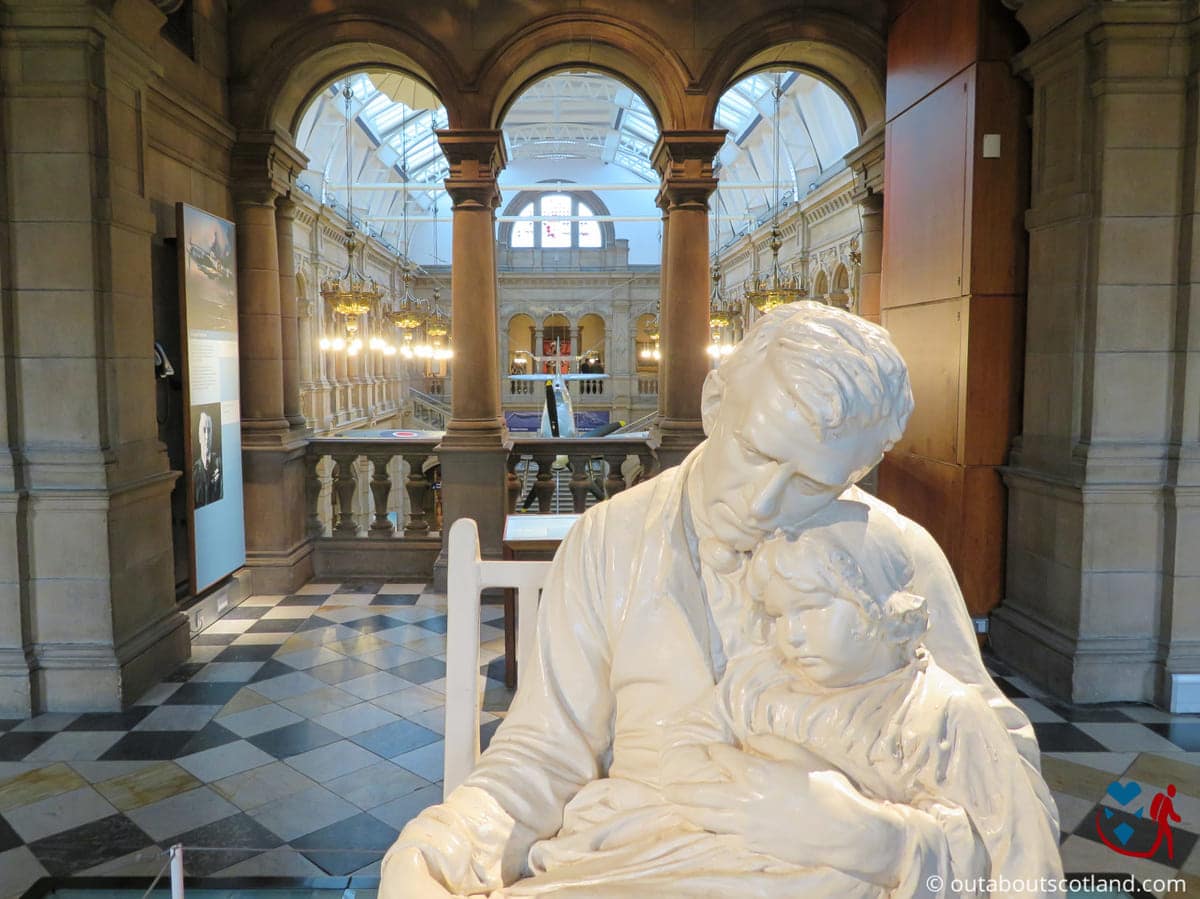
Kelvingrove Art Gallery and Museum is the focal point of the beautiful Kelvingrove Park, the 84-acre green space that was created in 1852 as a place of recreation for the city’s residents.
The constantly changing exhibitions in the museum and art gallery are displayed across multiple sections and visitors can enjoy over 9,000 artefacts and paintings that cover themes from modern art, the animal kingdom, Ancient Egypt, Scottish history and much more.
Designed to be informative as well as entertaining, Kelvingrove has gained a reputation for being one of the top places in Glasgow for family days out, with the bonus being that like most museums in the city there’s absolutely no fee to get in.
As part of a major restoration project, the museum was extensively renovated over three years and re-opened in 2006, with the exhibits organised into two halves: Life and Expression. The Life galleries represent natural history, human history, and prehistory, while the Expression galleries include fine art collections. Both are hosted across 22 state-of-the-art displays that are large enough to easily take up most of your day.
Kelvingrove Art Gallery and Museum is second only to the museums of London for the number of annual visitors, partially due to the art collection which is among the best in Europe. The artworks include masterpieces from Rembrandt, Renoir, Salvador Dali and others alongside antiquities from Europe and modern works from the celebrated Glasgow designer Charles Rennie Mackintosh.
The Riverside Museum of Transport
Address: 100 Pointhouse Place, Glasgow, G3 8RS
Contact details: 0141 287 2720
Out About Scotland visitor guide: The Riverside Museum
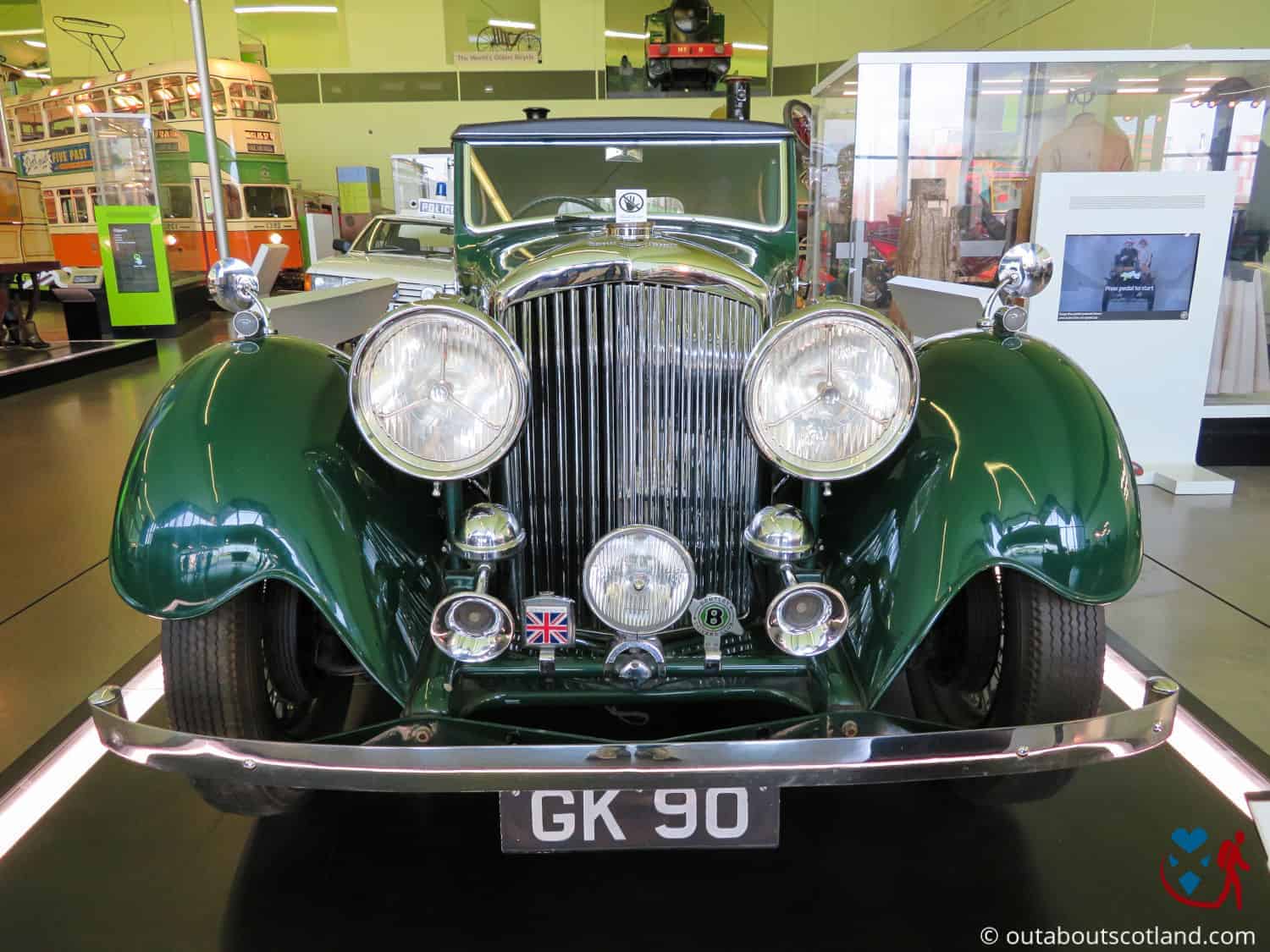
The Riverside Museum is home to a huge collection of cars, motorbikes, boats and trains, and there are so many travel-related exhibits on display you can easily spend an entire afternoon viewing them.
This museum was awarded the European Museum of the Year in 2013 and it regularly attracts over a million visitors annually, making it the fourth most popular attraction in Scotland. Amazingly, the Riverside Museum cost nearly £75 million to build and since opening in June 2011 it has amassed over 3,000 exhibits.
Inside you’ll find examples of every conceivable form of transport from skateboards to racing cars, with examples dating from the earliest days of the combustion engine to the modern era.
There’s so much to explore at this museum that you’ll likely have to make a return visit just to see everything, with vintage motorbikes, old buses, even older trams, fire engines, steam trains and interactive displays all explaining the story of man’s fascination with getting from A to B.
There are a couple of highlights that might surprise you about the Riverside Museum of Transport. First is the recreation of one of Glasgow’s yesteryear streets, complete with cobbled paving stones and shops dating from 1895 to the 1980s.
The second highlight is located outside the museum on the River Clyde, where The Tall Ship (a sailing ship called the Glenlee) is moored up alongside. The Glenlee first took to the water in 1896 and is one of only five ships built on the Clyde that’s still afloat today. She’s in an immaculate condition considering her age, and visitors can pretty much explore every single nook and cranny from the galley to the captain’s quarters.
The Best Free Things to Do in the Highlands
The Scottish Highlands is the largest area of Scotland, encompassing an area of more than 30,000 square kilometres, yet it has a population of fewer than 250,000 people.
Almost entirely mountainous and dotted with dense pine forests and hundreds of lochs, visiting the Highlands offers a unique experience that’s unmatched anywhere else in Europe. The remote wilderness of some of the UK’s most beautiful national parks makes this region the perfect place to get outside and enjoy the fresh air, whether it’s going for a leisurely walk or climbing an immense mountain.
Glenfinnan
Address: Glenfinnan, Highlands, PH37 4LT
Contact details: Tel 01397 722250
Out About Scotland complete guide: The Glenfinnan Monument
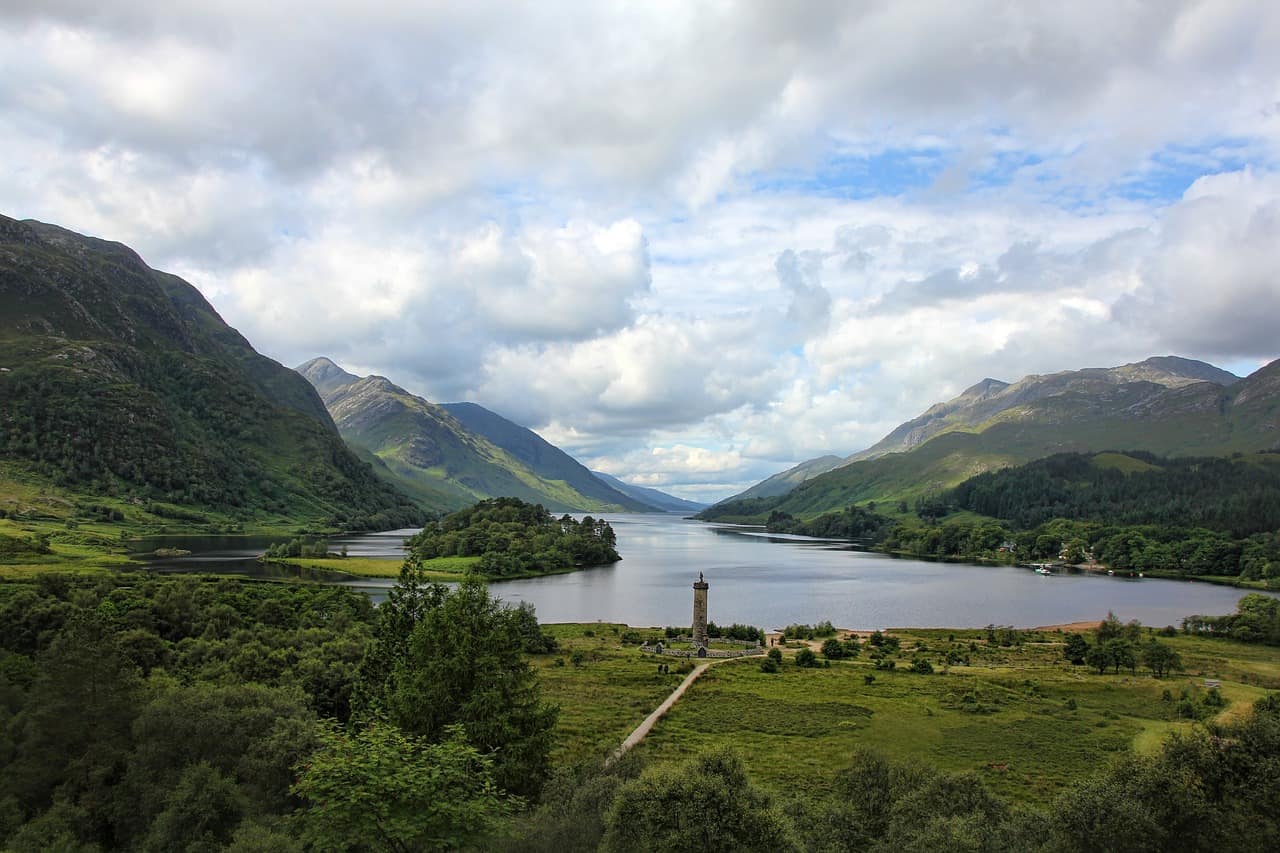
The village of Glenfinnan in the Lochaber area of the Highlands is famous for having three major tourist attractions on its doorstep, with the first being the Glenfinnan viaduct which offers one of the most spectacular photo opportunities in Scotland.
The viaduct has been one of Scotland’s top tourist attractions for many years and it offers superb views of The Jacobite steam train that transports tourists from Fort William to Mallaig. The sight of this vintage train puffing its way across the viaduct attracts thousands of visitors each year and their numbers have exploded since it was featured in the Harry Potter movies as the Hogwarts Express.
The second attraction is the view at the foot of Loch Shiel, with the Sgurr Ghiubhsachain mountain rising on one side and Rois-Bheinn rising on the other. The third attraction is the Glenfinnan Monument, which sits at the northeast head of Loch Shiel and has commanded spectacular views of the Highland landscape since its construction in 1815.
The monument was commissioned by a member of Clan Macdonald of Glenaladale to commemorate the raising of the standard by the ‘young pretender‘ prince, and in 1835 the statue of the anonymous Highlander was placed at the top. The tower has been a respected Highland landmark ever since which is why it is now in the care of The National Trust for Scotland which has maintained it since 1938.
The Trust has built a car park and pathway to the monument so that it can be accessed by people of all abilities, and a visitor centre has been constructed to educate tourists about the ill-fated Jacobite uprising and the history that led up to this important moment in Scotland’s history.
The centre also includes educational exhibitions and displays about the area, as well as a café and gift shop.
Loch Morlich
Address: Glenmore village, PH22 1QU
Contact details: NA
Out About Scotland complete guide: Loch Morlich
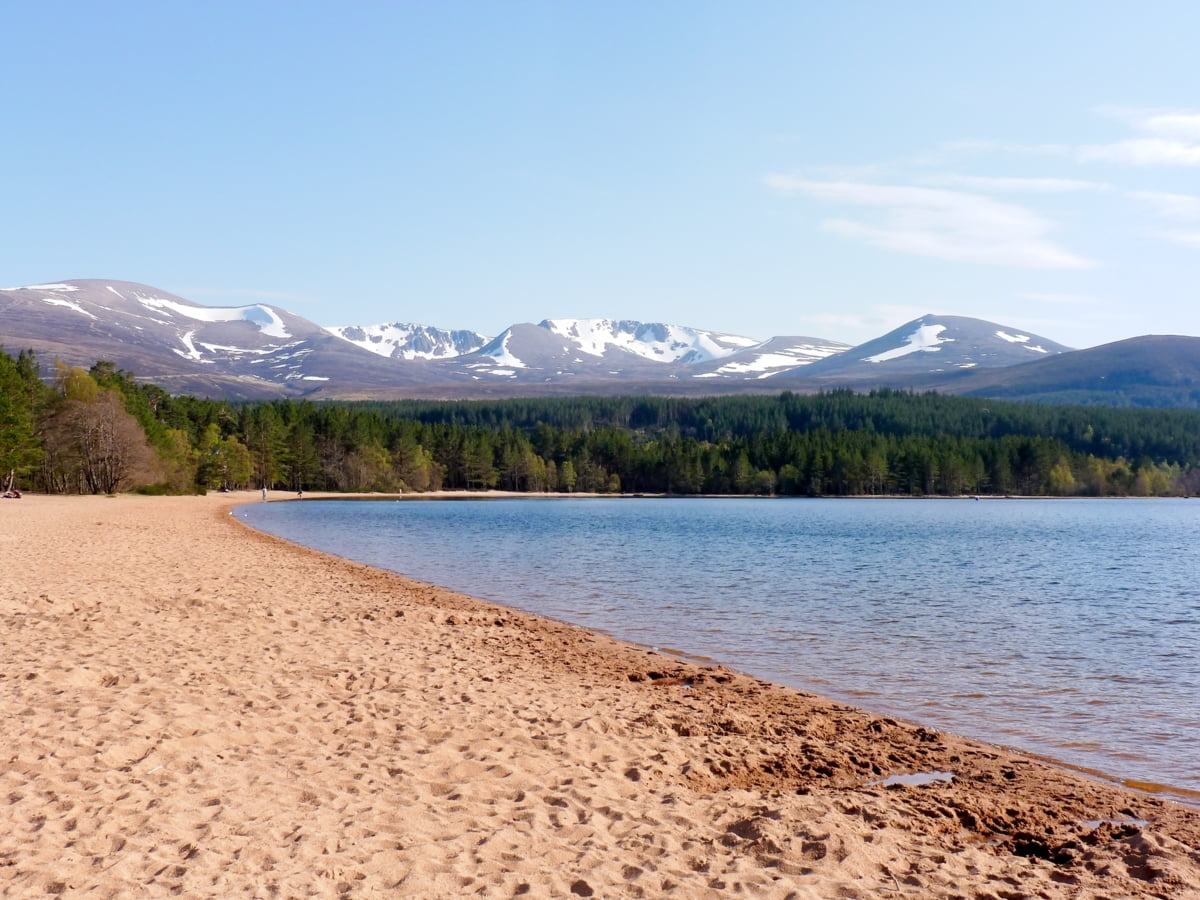
Deep in the heart of Scotland’s beautiful Strathspey area lies Loch Morlich, a natural freshwater loch that’s considered by many to be the most attractive in the Highlands.
The loch is situated at the bottom of the Cairngorm mountain range, just a few miles from Aviemore, where it is surrounded by the lovely Glenmore Forest. The area is one of the best in the Highlands for mountain sports and hill walking, and it’s within easy reach of several superb mountain biking trails.
It’s the view that first hits you when you visit, and I guarantee you’ll have trouble taking it all in as you walk out of the adjoining car park and set foot on the golden beach.
The vast snow-capped peaks of the Cairngorms rise high into the clouds on one side and the deep-green Scottish pines of Glenmore Forest sweep away into the distance in every other direction. It really is a very attractive place and it’s a must-visit for nature enthusiasts.
The visitor centre across the road has plenty of snacks and ice cream, and there’s also a picnic area on the site if you want to take a packed lunch. The only thing you’re not allowed to do is camp in the recreational areas, which is necessary to keep discarded plastics to a minimum.
Inverness Botanic Gardens
Address: Bught Lane, Inverness, IV3 5SS
Contact details: Tel. 01463 713553
Website: Inverness Botanic Gardens
There are a lot of things to enjoy at the Inverness Botanic Gardens and visitors can explore a mixture of formal gardens, wildflower meadows, cactus houses, ponds, and a tropical glasshouse in this volunteer-run attraction. The glasshouse is worth visiting in its own right as it features lots of tropical plants and it’s quite an experience to walk out of the cold Scottish air and into the balmy heat of a rainforest.
Once you step inside you’ll find a cascading waterfall in the glasshouse with a pool full of beautiful (and inquisitive) Koi Carp which makes the whole experience very relaxing, if slightly surreal.
Some of the plants will be immediately recognizable to anyone with an interest in flora and fauna, but there are many more that you probably haven’t seen before like the beautiful bird of paradise plants with their lovely yellow and orange flowers.
Next door to the rainforest is a cactus house that showcases hundreds of different species of cacti that survive in extremes of temperature. It’s quite a bit cooler in there than in the rainforest so you’ll be able to acclimatize before heading to the outdoor gardens.
The lawns, trees, shrubs, and borders of this section of the botanic gardens are linked by meandering paths that take you past rockeries and cottage gardens, while a ramshackle gate at the back of the formal gardens leads into a’secret garden’ that is managed by a group of adults with special needs.
Frequently Asked Questions
How can I save money on Scotland’s trains?
The Trainline offers instant online ticket booking at prices that are up to 43% cheaper compared to buying the same ticket directly from the station. You can also save money with a ScotRail Travel Pass and by buying train tickets up to 12 weeks in advance.
How can I save money on Scottish accommodation?
Hostels offer same-sex and mixed-sex dorm rooms in city centres like Edinburgh and Glasgow for as little as £20 per night.
An alternative option is to book a budget hotel room out of season when you’ll find city centre rooms for £50 or less, which is 2 to 3 times cheaper than the same room in peak (summer) season.
What is the cheapest way to travel in Scotland?
Buses are the cheapest way to travel between cities in Scotland and you will often find coach companies like Mega Bus and Citylink with special offers of £1 between Edinburgh and Glasgow. At other times a cheap-rate bus ticket between the cities costs around £5.
How can I save money on Scottish tourist attractions?
The historic structures that Historic Environment Scotland manages are many of Scotland’s best attractions. The cheapest way to visit these attractions is to buy a HES membership, which costs around £4 per month for an adult.
Are all museums in Scotland free?
Most museums in Scotland are free to enter, but some may have a small admission fee or charge for special exhibitions.
Some examples of free museums in Scotland include the National Museum of Scotland in Edinburgh, the Kelvingrove Art Gallery and Museum in Glasgow, and the McManus Museum in Dundee.

